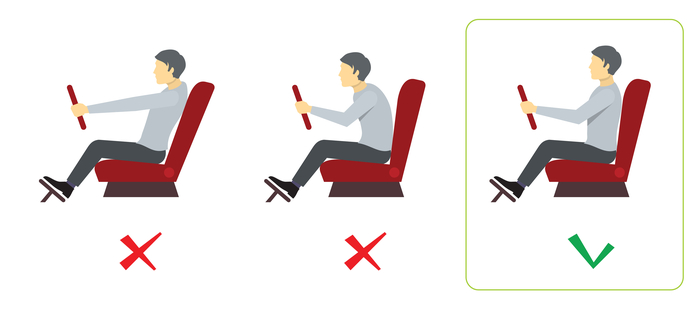What are the negative effects of poor driving posture on your body?
Many people drive for a living, commute long distances daily or at some point are required to drive long distances to reach holiday destinations.
How can Chiropractic help resolve this ongoing problem?
The British Chiropractic Association (BCA) published figures which found that 32000 people visit a Chiropractor each month with injuries that are aggravated, or caused by, poor driving posture.
The Chiropractors at Lilliput Health in Poole, would like to help offer some simple, easy to follow advice on avoiding the pain and discomfort associated with driving.
The optimal driving posture:
The seat:
- The car seat should be set to a slightly leaning backwards position.
- The lower back should be supported. If it doesn’t feel supported, roll up a towel and place it in the small of your low back.
- Your elbows should be at a comfortable and relaxed angle for the steering wheel.
- Drive with your hands in the 20 to 4 position rather than 10 to 2. This relaxes the shoulder muscles.
- Don’t sit too far from the pedals. This can put additional strain on your neck and upper back.
- Your seat belt should always lie across the top of your shoulder and should never rub against your neck or fall onto the top of your arm.
- Once you feel like you have the correct driving posture, then set your car mirrors to suit your posture. If you then slump or change position, the mirrors will no longer be correct and you will readjust your posture to gain a better view.
When driving:
• Take regular breaks – the BCA advises that you should stop and stretch your legs (and arms!) at least every two hours.
• If you are stuck in traffic or at traffic lights waiting, exercise in your seat. Try buttock clenches, side bends, shoulder shrugs and shoulder circles.
Survey completed by Motorpoint discovered that 75% drivers suffer with back pain because they drive in the wrong seating position. The survey findings revealed that 30% of drivers don’t sit correctly at the wheel.
The age group with the highest proportion of back pain was those aged 25-34, with 83% of r claiming to be affected. This was closely followed by those aged 35-44 (79%). More women than men were shown to be suffering back pain (78% to 71%) as a result of driving position.
““Poor driving positions, especially if repetitive or for long journeys, can lead to spinal pain in the neck and lower back. This can create areas of joint stiffness, muscle tightness and altered posture” – Clare Henson-Brown from Bespoke Wellbeing”
